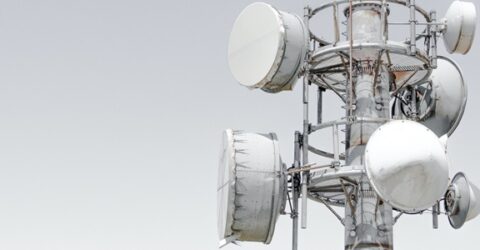‘Air Fibre’ broadband offers connectivity where others fail
Air fibre broadband masts offer an alternative internet delivery system that could be coming to a street near you.

We’d like to think our readers are already familiar with the concept of fibre broadband, but air fibre broadband is unlikely to have registered as a concept until now.
While its name might suggest some ingenious adoption of wireless communications, it’s rather more prosaic than that.
However, it’s worth taking a moment to consider what air fibre broadband consists of, and why it’s increasingly being harnessed to stream high-speed broadband into our homes.
Fresh air shot
In many respects, air fibre broadband masts are the modern-day equivalent of telegraph poles.
We’re used to high-speed broadband cables being buried underground, often in the groundworks stages of new residential developments.
Air broadband negates the costly need to dig up the ground, or risk damaging existing subterranean cabling or pipework, by distributing those fibre cables overhead.
In the case of the installations currently taking place across Lancashire, poles are installed at a 15-metre height with overhead fibre cabling suspended between them.
Like existing underground networks, these giant masts link regional data centres to local areas.
Unlike underground networks, the final leg of data’s journey doesn’t happen along a cable connecting local exchange boxes to individual dwellings.
Instead, this final stage is handled by a local transmitter, which wirelessly distributes data as radio signals into homes with a small receiver mounted on an external wall.
Those 15-metre poles rarely need to extend along residential streets, though they need to be reasonably close to properties for wireless data transfers to be swift and reliable.
A dish or receiver on the side of a building will be joined up to a cable extending indoors to a router that will distribute data wirelessly around the home.
Similar systems have been operating in other parts of the UK for a while, though speeds vary hugely.
An air fibre system in Northern Ireland is advertised with maximum speeds of just 30Mbps, for instance, even though the technology could theoretically sustain gigabit connectivity.
What are the benefits?
If you live in an area without pre-existing cabled fibre broadband, air masts offer an alternative delivery method that won’t require digging up the streets outside your home.
Because they use radio signals, speeds don’t diminish as distances increase, so there’s no need to live in close proximity to an air broadband mast.
Planning permission is often easier to obtain for a future overground mast than an underground installation, while one mast could serve many isolated rural properties.
Masts are relatively quick and cost-effective to install and activate, generally working well in remote areas where even mobile network data might be limited.
What about the drawbacks?
The need to physically install hardware outside each dwelling poses problems in conservation areas and blocks of flats, as well as being problematic for tenants in rental homes.
More discreet than television satellite dishes, these receivers still form noticeable additions to the outside of any building.
Many services offer speeds no better than FTTC, and prices are relatively high. One provider currently offers a 10Mbps package (equivalent to ADSL line speeds) at £25 per month plus VAT.
Air broadband is also more susceptible to interference and bad weather than subterranean fibre services, making it more akin to satellite broadband.
Finally, few companies offer these services, and those that do often hold a local monopoly, so switching to a more competitive broadband deal in future could be difficult.






